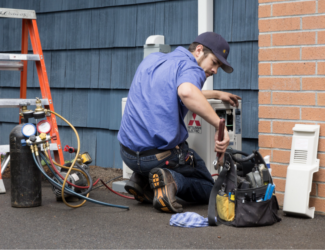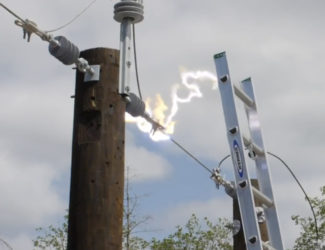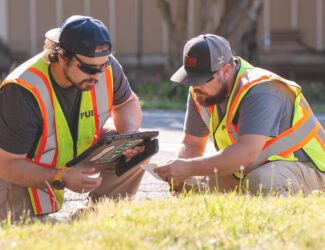
2010s – Big Strides for Reliability and Renewable Energy
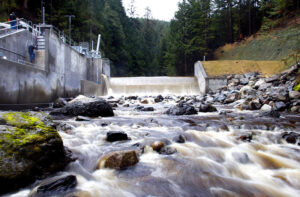
Our goal has always been to provide reliable and affordable power for our customers. How we did that evolved over time, with a focus on renewable, clean energy for a sustainable future. In the 2010s, we really settled into our stride. Our Youngs Creek Hydroelectric project went online in 2011, just south of Sultan. With an annual production of 18,000 MWh – enough to power about 1,500 homes – it was the first new hydro project in Washington state in nearly 20 years. (And was named Renewable Energy World magazine’s 2012 Hydro Project of the Year!)
Later in the decade, we signed a contract with Qualco Energy for a biogas facility south of Monroe. This facility generates energy from a mix of waste products, including cow manure, restaurant trap grease, expired alcohol and soda and other biowastes.

In 2016, we marked the sale of our 10 millionth energy-efficient light bulb, while our 1,000th customer installed a solar array.
To ensure our technology continued to be secure, the PUD partnered with the National Guard for a two-week cybersecurity exercise. This drill showed where we enhance our cybersecurity and helped keep the grid secure.
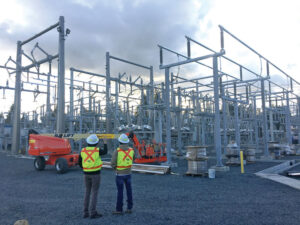
In 2017, the PUD completed a 10-year grid modernization program that improved system reliability by automating our substations. We also launched our online outage map – which recently underwent renovations of its own and continues to provide customers with the latest info on outages and estimated time of restorations.
Finally, in 2018, the PUD’s Hancock and Calligan Creek hydroelectric projects began operation. Both of these projects, which are located outside of sensitive wilderness areas, provide clean, renewable energy for our customers, in addition to allowing us to monitor creek temperatures and oxygen levels in real time.
2000s – PUD Looks into the Future

The PUD took prepping for Y2K seriously, running tests and joining nationwide drills to ensure systems could handle the new millennium. A team of 150 employees were on-site or on-call to guarantee everything went to plan as the clock struck midnight January 1, 2000.
In 2004, thanks to diligent work by the PUD legal team, the utility released audiotape evidence revealing widespread corruption by Enron, an energy, commodities and services company that lost its shareholders over $74 billion.
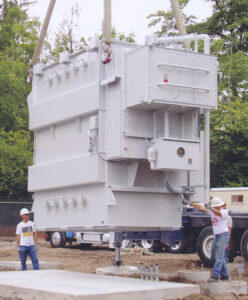
The number of PUD customers reached the 300,000 mark in 2005. At the end of 2009, estimates were that the utility’s service territory would be home to a million people by 2029.
In 2006, record back-to-back snow and windstorms hit the area. Later that year, the PUD became one of the first utilities in the Northwest to adopt a climate-change policy and received permits to study seven tidal power sites in the Puget Sound.
In 2008, our legendary “Be a Conservation Sensation” campaign kicked off, which helped exceed yearly conservation goals by 11%. Also that year, the utility’s first online payment program (SnoPAY) launched.
As the decade wrapped up, the PUD’s Planet Power program began to support local small-scale solar projects. The Department of Energy also announced the PUD as a recipient of a $15.8 million grant to embark on a smart grid technology project.

1990s – Population Booms and Major Storms
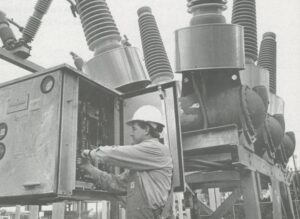
The early ’90s saw the PUD grow to over 200,000 customers as Snohomish County and Camano Island saw a huge influx of construction and new residents. Those residents joined a public power utility that continued to champion the benefits of conservation and work toward a greener future for its customers.
Many of those customers were impacted by the Inaugural Day Storm in 1993. The storm – the worst in the PUD’s history – knocked out power to about 80% of our customers. It took days to assess the full damage of the storm, which knocked down power lines from Camano Island to the King County border.

But, as it had done continuously throughout its first five decades, the PUD rebuilt after the storm. Our crews continued their generations-long work of providing reliable power to our customer-owners and quickly worked to restore power. A few years later, in 1999, the PUD celebrated its 50th anniversary.
PUD Pioneers – Kathy Vaughn 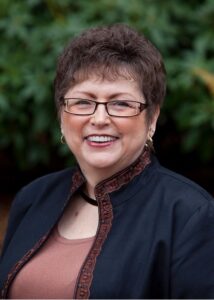
In 1994, Kathy was one of the first women elected to the PUD’s Board of Commissioners and continued to help lead the utility for the next 24 years. To this day, she still holds the mark for the longest-serving commissioner in the PUD’s history.
Kathy served four six-year terms representing District 2 – which covers southwest Snohomish County including Lynnwood and Edmonds. A Lynnwood native, Kathy was a mortgage-loan broker who had never previously run for office when she won her first election in 1994.
During her time at the PUD, Kathy helped oversee tremendous growth for the utility. She helped approve a 10-year grid modernization program that greatly improved our system reliability. She was also on the commission that adopted a climate change policy in 2007 – helping the PUD become one of the first utilities in the Northwest to do so. Kathy also voted to approve the PUD’s first foray into solar projects and helped the PUD establish some of the strongest net metering customer programs in the state.
Commissioner Vaughn also helped expand our hydro footprint, approving several projects including Youngs Creek and our Hancock and Calligan Creek Hydroelectric projects.
“I have worked to make decisions with the environment, being a good steward of our resources and you, the customers in mind,” Kathy told My Edmonds News in 2018. “I have had the ability to bring new technology, enhance existing programs and promote ideas that developed low-income and senior programs, and expanded conservation, bringing cost savings to all customers.”
Along with serving the PUD and its customers, Kathy was a member of the American Public Power Association’s Policy Makers Council, which works on national energy policy issues in Washington, D.C. She also served on the Board of Directors for Energy Northwest and was selected Business Woman of the Year in 2005 by the Snohomish Business Journal.
PUD Serves as a Test Ground for New Electric Vehicle

In 1997, Ford Motor Company’s new Ford Ranger Electric Vehicle was on display at the PUD Electric Building lobby. It was the debut of a new generation of electric vehicles. The truck was powered by a 2,000-pound lead-acid battery system and had a range of about 50 miles. The PUD wanted to showcase this new technology to encourage the development of environmentally sound transportation.
The PUD’s Transportation Department was instrumental in bringing the prototype to Everett, where it was tested by driving a meter reading route for a day!
1980s – Building Toward an Environmentally Sustainable Future
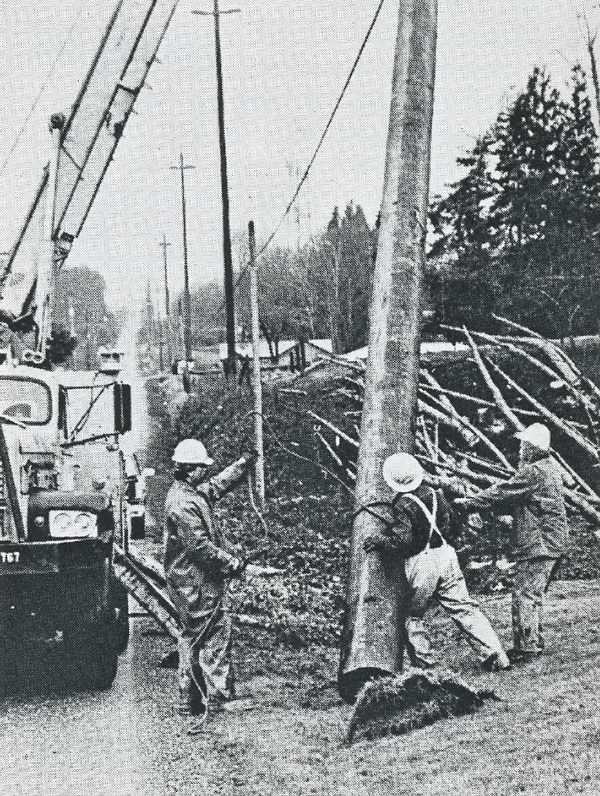
During the ’80s, the PUD continued to build the utility that serves you today. In 1980, our Operations Center near the Boeing Plant was completed. It is a central hub for our crews and houses other crucial departments such as Engineering, Transportation and our Maps and Records group.
We also completed the second phase of our Sultan project, later named the Jackson Hydroelectric Project, in 1985. The 112-megawatt hydroelectric facility produces about 7% of our power needs and generates enough electricity to power more than 56,000 homes with clean, renewable energy. In addition, Spada Lake – the Jackson project reservoir – provides 75% of the drinking water supply to Snohomish County. It also offers numerous recreational opportunities like boating, hiking and picnicking, as well as incidental flood control.
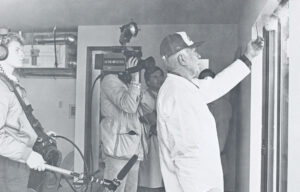
Conservation and sustainability have been at the heart of the PUD since the beginning. By the time the 1980s rolled around, we had a variety of conservation programs in place to help customers save energy and money. We continued those efforts throughout the decade and, by 1989, our conservation programs had reached 1 billion kilowatt hours in savings!
PUD Pioneers – Danny Miles

Hydroelectric projects in Snohomish County all have one thing in common: Danny Miles.
As a PUD engineer for 39 years, Danny’s fingerprints are all over the PUD’s hydro projects, from working as an inspector on the Henry M. Jackson Hydroelectric Project to lead engineer on more recent run-of-the-river hydropower projects like Hancock Creek and Calligan Creek projects.
Danny also worked as lead engineer on the construction of Youngs Creek hydro project near Sultan and Woods Creek outside of Monroe.
As an inspector during the Jackson project’s construction, Danny helped shepherd the project to completion in 1985. The project involved using a tunnel boring machine, measuring 14 feet in diameter, to bore a four-mile tunnel from Spada Lake intake to the powerhouse. During the course of the tunneling, about 3 million cubic feet of rock and sediment were removed.
Danny had an encyclopedic knowledge of the PUD’s hydro projects. While overseeing the projects, he oversaw construction on-site, hammered out contract details, traveled to foreign countries to inspect equipment, and mentored future PUD engineers and students.
Danny passed away in 2019, leaving an indelible legacy as a public servant, hydro expert and enthusiastic explorer.
The 1970s – The Original Conservation Sensations
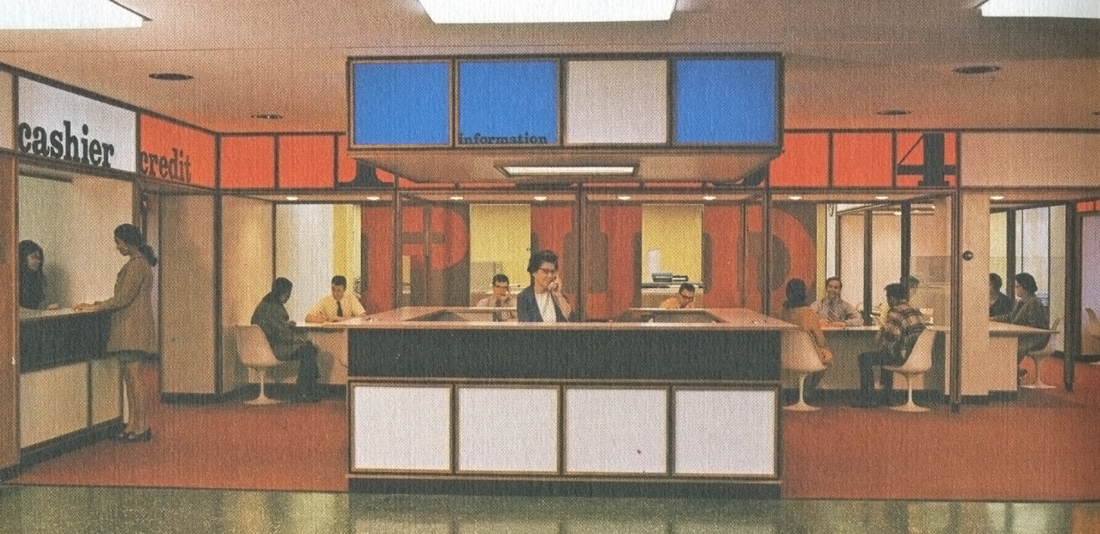
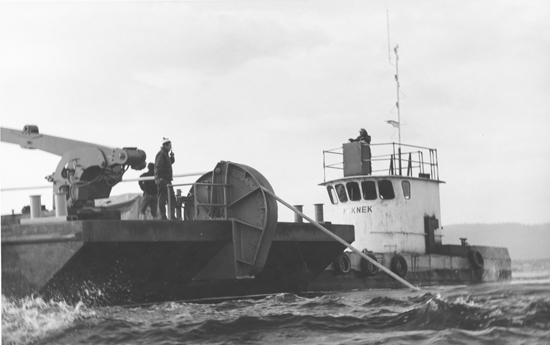
As the PUD reached over 100,000 customers, our focus remained improving reliability and service for our customer-owners. In 1970, we completed a two-story addition to the Electric Building, our downtown Everett headquarters, located on California Street and Virginia Avenue.
Shortly after, we worked to energize Hat Island with construction of an underground distribution system on the island and the installation of almost 16,000 feet of submarine cable. (Interestingly, we are currently designing and planning a new submarine cable to replace the one currently connecting the island.)
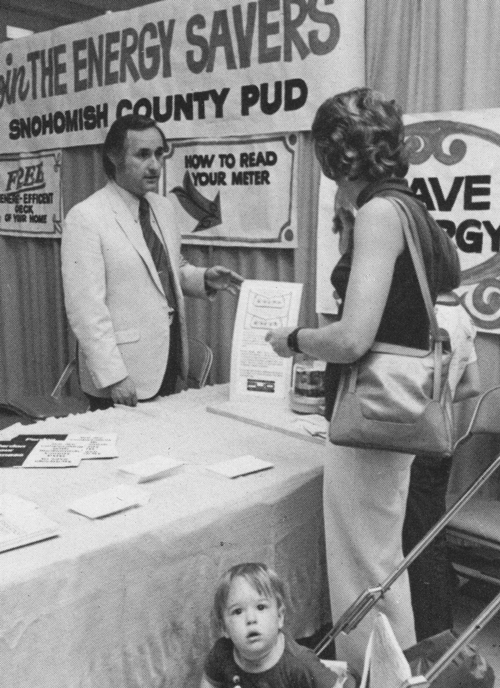
Late in the decade, the PUD’s Energy Conservation Program was developed and established. In what has become a goal for the utility ever since, the PUD realized that one of the most effective ways to help customers save money was to help them curb their energy needs. The first program included energy audits for residential customers, public information programs and advertising, energy-efficient designs in new facilities, and upgrading existing ones with various conservation measures.
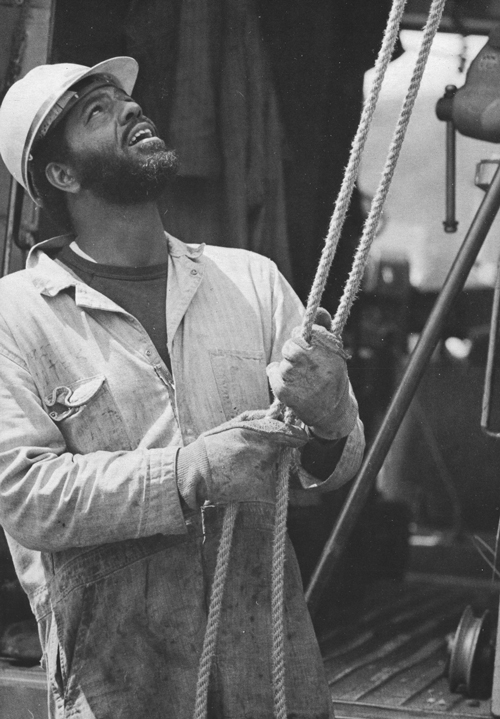
In 1979, your PUD broke ground on construction of our Operations Center in south Everett near the Boeing plant. The Operations Center, or Ops as it’s known to PUD insiders, is still the hub for our line and substation crews, engineers, transportation department and more.
The worst windstorm in 17 years – since the Columbus Day Storm – struck the area in February 1979, leaving about 50,000 of our 130,000 customers without power. Storm damage ran over half a million dollars.
PUD Pioneers – Thomas Quast
One of the first PUD commissioners, Thomas Quast was instrumental in shaping the utility. He was elected in 1948 – one year before the PUD officially purchased the electrical distribution system to serve all of Snohomish County and Camano Island – and was re-elected five times, serving as a PUD Commissioner for 27 years.
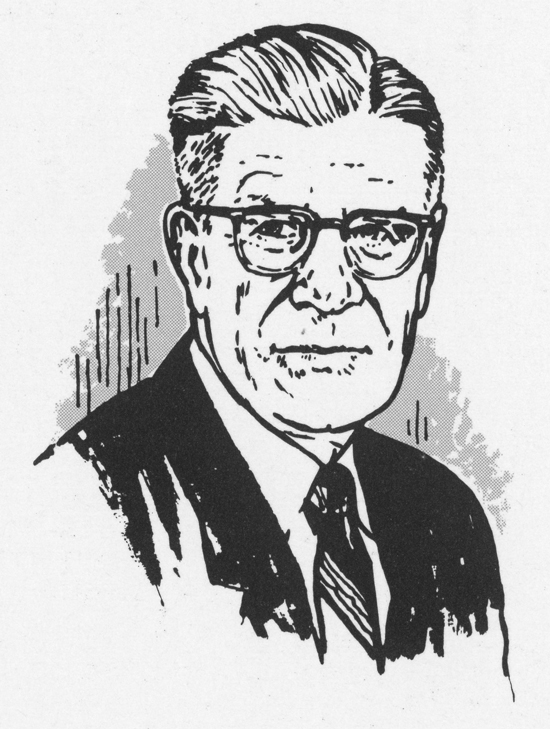
Under Quast’s leadership, the PUD transformed into a leader in public power. While he was commissioner, the PUD developed much of the grid and constructed many of the buildings still in use today. Quast helped oversee tremendous growth for the PUD and worked with the other commissioners to form a stable base to allow the utility to meet future needs.
Quast was on the board of directors of the Washington Public Power Supply System, a trustee of the Northwest Public Power Association, and an honorary life member of the American Public Power Association.
Quast owned and operated Cedarcrest Golf Course in Marysville for 34 years, through the Great Depression as well as World War II. His daughter, Anne Quast, went on to become a three-time U.S. Women’s Amateur champion, a British Women’s Amateur Champion and a three-time U.S. Senior Women’s Amateur champion. She was also an eight-time Curtis Cup player.
Quast was married to his wife Joan for 62 years, until his death in 1997.
The 1960s – Expanding in Our Communities
If the PUD spent the ’50s building its core business in downtown Everett, it spent the next decade expanding.
Click here to see PUD trucks of the 1960s
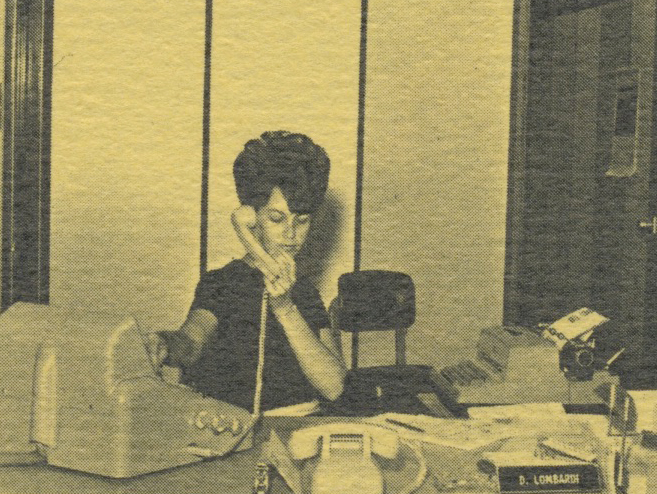
To better engage with our customers, the PUD began building offices across its service territory. It started with an office in Arlington opening in 1959, and continued into the 1960s, with offices in Stanwood (1960), Monroe (1961), Snohomish (1965) and Lynnwood (1968), over the course of the decade. Customers used these offices to pay their bills, talk to customer service representatives and have questions answered by PUD experts.
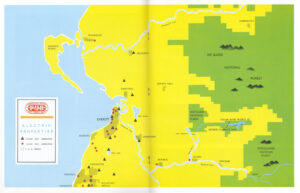
The PUD was also instrumental in helping the region grow. PUD engineers worked to ensure that significant buildings like the Boeing production plant, Weyerhaeuser Paper Mill, and Snohomish County Courthouse were built in the most energy-efficient way. The PUD also advised on reconstruction after a fire on the Everett waterfront damaged several buildings in 1961.
Click here to see communities through the lens of the PUD 1965 Annual Report
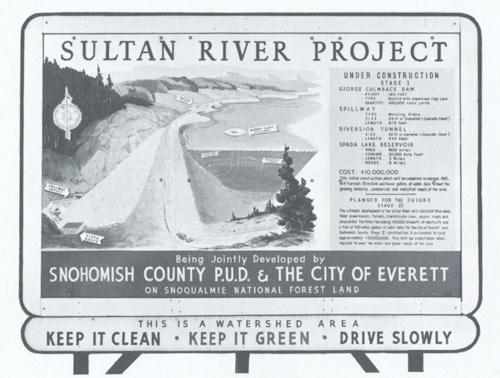 Early in the decade, one of the PUD’s largest undertakings ever began with initial construction on our Sultan River Project. Phase 1 involved building Culmback Dam to a height of 200 feet to form Spada Lake, which was completed in 1965. Along with creating an independent way to produce electricity, the project sought to provide an ample water supply to Snohomish County. The dam remains co-owned by the PUD and City of Everett.
Early in the decade, one of the PUD’s largest undertakings ever began with initial construction on our Sultan River Project. Phase 1 involved building Culmback Dam to a height of 200 feet to form Spada Lake, which was completed in 1965. Along with creating an independent way to produce electricity, the project sought to provide an ample water supply to Snohomish County. The dam remains co-owned by the PUD and City of Everett.
This decade of expansion wasn’t without rebuilding. The Columbus Day Windstorm in October 1962 wreaked havoc in the Northwest, including the PUD’s service territory. The storm caused about $250,000 in damage to PUD facilities and equipment – roughly $2.5 million in today’s dollars.
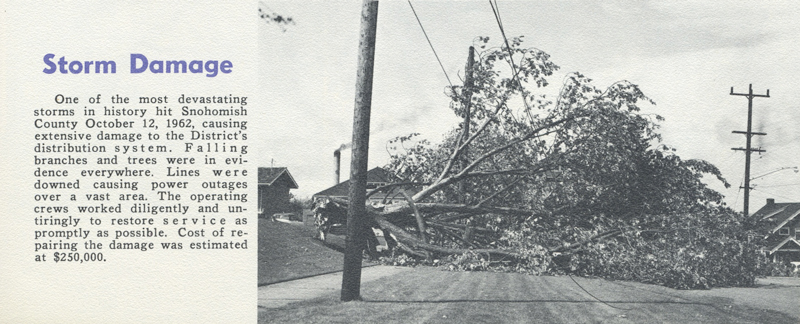
The 1950s – Building our New Home

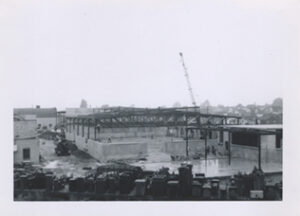
With the PUD established and providing affordable power to Snohomish County and Camano Island, it was quickly clear that upgrades and infrastructure improvements were needed to serve a growing customer base.
Our first service shop was completed in 1955 in downtown Everett. It featured a store room, garage and transformer repair shop, and parking for line trucks.
Speaking of line trucks, when the electric properties were purchased in 1949, there were 44 cars and trucks and nine trailers in service. By the end of the decade, those vehicles were replaced and the PUD boasted a pool of 78 cars and trucks and 13 trailers – plus five cars and trucks for the Water Department. Two hydraulic lifts were also in operation and utilized primarily for tree trimming.
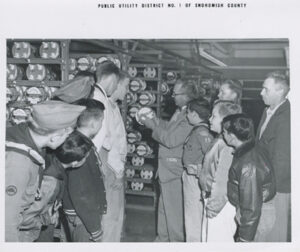
But we weren’t done there! Three years later, our company headquarters was completed right alongside the service shop. The inaugural Electric Building, located where it currently sits at the corner of California Street and Virginia Avenue, opened to help us serve the public. The 35,000-square foot building cost $19 per square foot to build. It was only two stories tall at the time, but was built so that it could accommodate future expansion down the road.
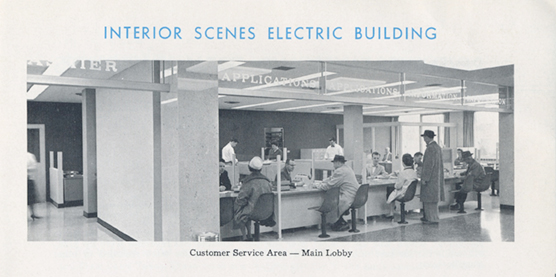
From the archives: view your PUD’s first-decade accomplishments
Let's Get Together!
We strive to serve our community and connect with customers.




